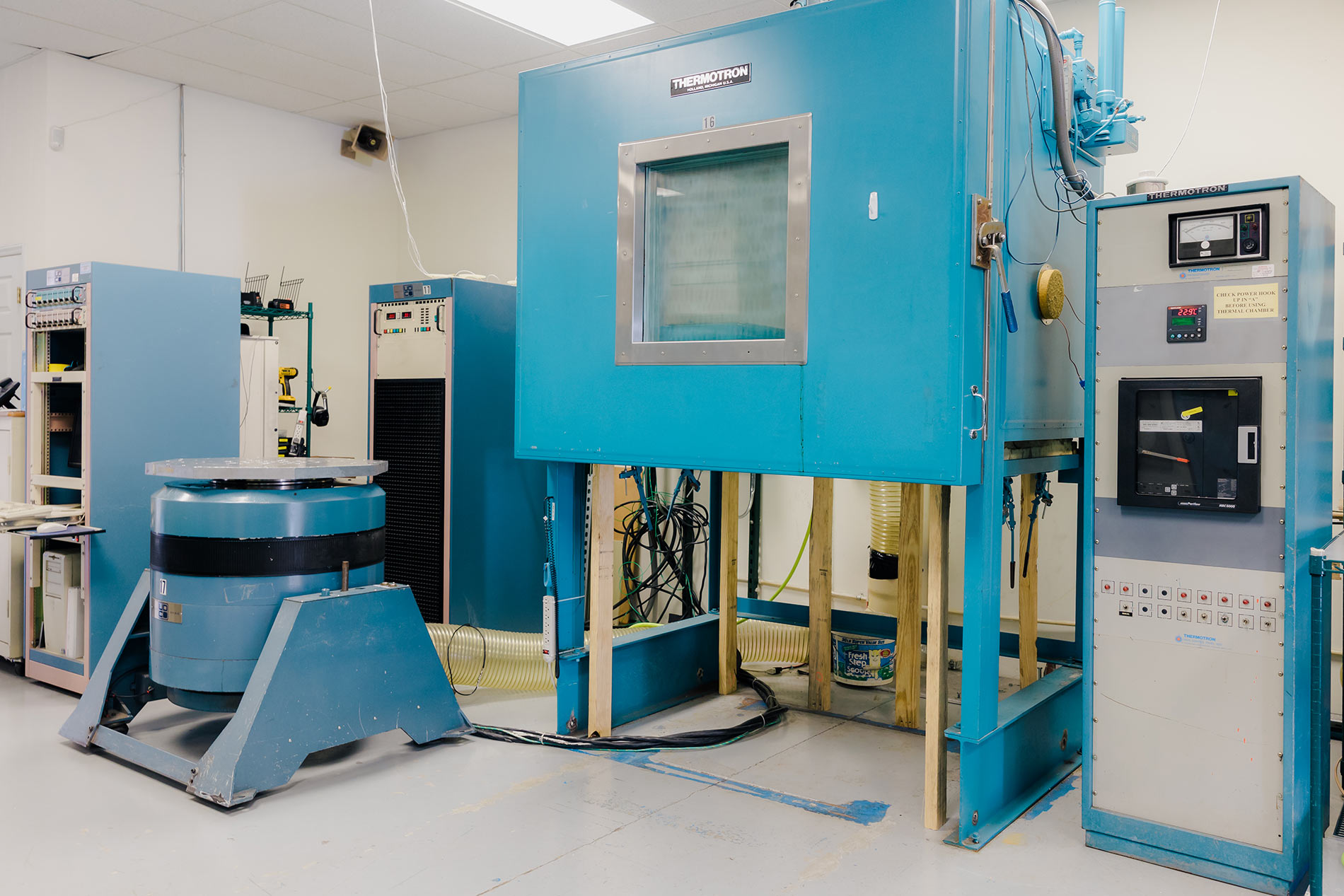
MAIN STANDARDIZED DOCUMENTS
-
MIL-STD-810H
-
MIL-STD-833
-
MIL-STD-202
-
IEC 60068
-
SAE J1455
-
JEDEC 22
COMMON INDUSTRIES THAT UTILIZE SHOCK TESTING ON A REGULAR BASIS:
-
Military
-
Commercial
-
Industrial
-
Automotive
-
Electronic
-
Aerospace
COMMON INDUSTRIES THAT UTILIZE SALT FOG TESTING ON A REGULAR BASIS:
-
Military
-
Commercial
-
Industrial
-
Automotive
-
Electronic
-
Aerospace
Measuring the Impact
Measure the impact and evaluate the resistance of your products and components to shock and vibration with the help of C&C Technologies.
Our goal of shock testing is to simulate the types of shocks and vibrations that a product may experience during use, transport, or storage. Half Sine, Sawtooth, and Squarewave waveforms are commonly used in our lab to simulate different types of shock events.
Half Sine Wave: The half sine wave is often used to simulate high-frequency, short-duration shocks, such as those experienced during shipping or handling of a product. It has a rapid rise time and a shorter duration than other waveforms, making it ideal for simulating short-duration shocks.
Sawtooth Wave: The sawtooth waveform is used to simulate shocks that have a longer duration and a more gradual rise and fall time. This type of waveform is useful for testing products that will experience shocks over a longer period of time, such as those used in automotive or aerospace applications.
Square Wave: The square waveform is used to simulate repetitive shocks or vibration events, such as those experienced by products on an assembly line. This type of waveform is useful for testing products that will experience repeated shocks or vibration events over an extended period of time.
The waveform used in shock testing depends on the specific application and the types of shocks and vibrations the product is expected to encounter during its lifecycle. The type of waveform used in shock testing will affect the results obtained, and it is important to carefully select the appropriate waveform to ensure accurate testing and evaluation of the product.
Measuring the Impact
Measure the impact and evaluate the resistance of your products and components to shock and vibration with the help of C&C Technologies.
Our goal of shock testing is to simulate the types of shocks and vibrations that a product may experience during use, transport, or storage. Half Sine, Sawtooth, and Squarewave waveforms are commonly used in our lab to simulate different types of shock events.
Half Sine Wave: The half sine wave is often used to simulate high-frequency, short-duration shocks, such as those experienced during shipping or handling of a product. It has a rapid rise time and a shorter duration than other waveforms, making it ideal for simulating short-duration shocks.
Sawtooth Wave: The sawtooth waveform is used to simulate shocks that have a longer duration and a more gradual rise and fall time. This type of waveform is useful for testing products that will experience shocks over a longer period of time, such as those used in automotive or aerospace applications.
Square Wave: The square waveform is used to simulate repetitive shocks or vibration events, such as those experienced by products on an assembly line. This type of waveform is useful for testing products that will experience repeated shocks or vibration events over an extended period of time.

The waveform used in shock testing depends on the specific application and the types of shocks and vibrations the product is expected to encounter during its lifecycle. The type of waveform used in shock testing will affect the results obtained, and it is important to carefully select the appropriate waveform to ensure accurate testing and evaluation of the product.
COMMON INDUSTRIES THAT UTILIZE SHOCK TESTING ON A REGULAR BASIS:
-
MILITARY
-
COMMERCIAL
-
INDUSTRIAL
-
AUTOMOTIVE
-
ELECTRONIC
-
AEROSPACE
MAIN STANDARDIZED DOCUMENTS
-
ASTM B117
-
MIL-STD-810H
-
MIL-STD-202
-
IEC 60068
-
SAE J1211
-
GR-487-CORE
Want to talk to a C&C Technician to assist you in setting your parameters?
Contact us today to learn more about C&C Technologies and how we can help you achieve your testing goals.
This site is protected by reCaptcha and the Google Privacy Policy and Terms of Service apply.
